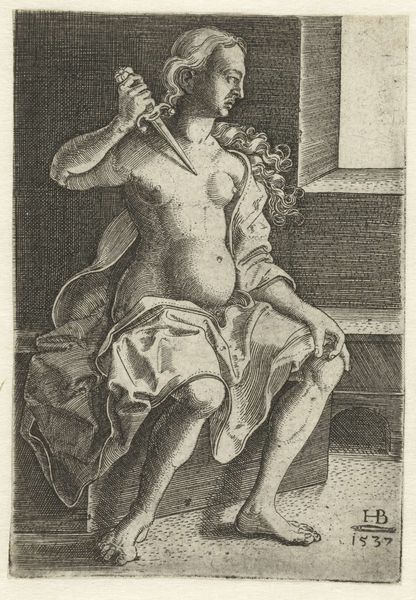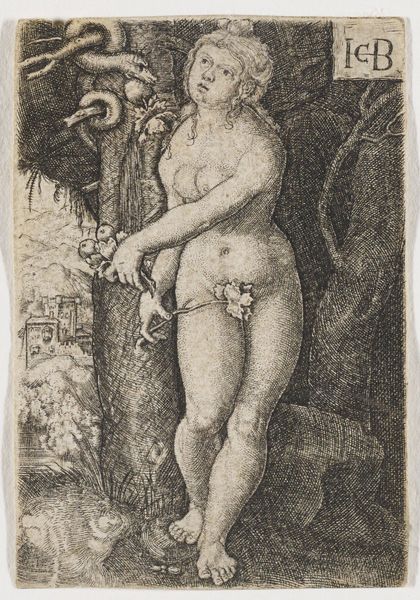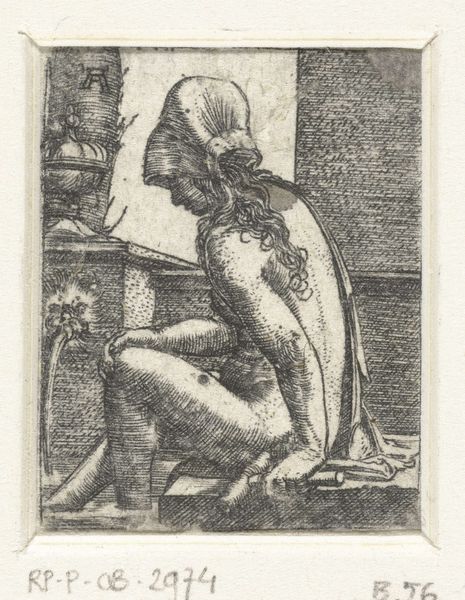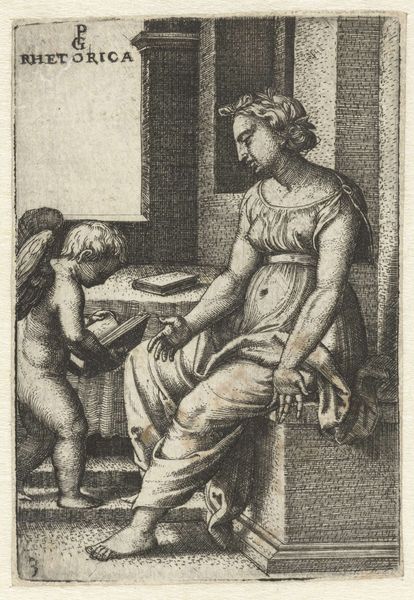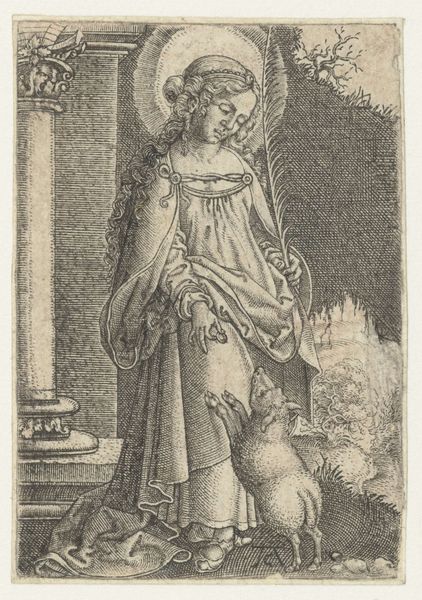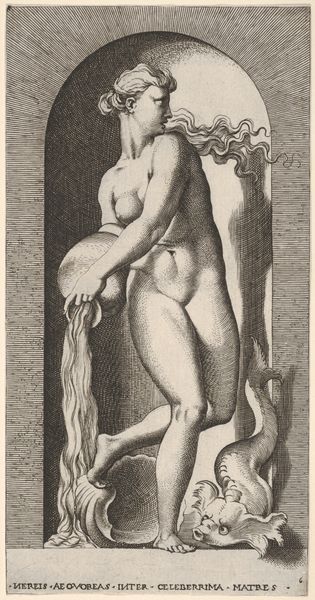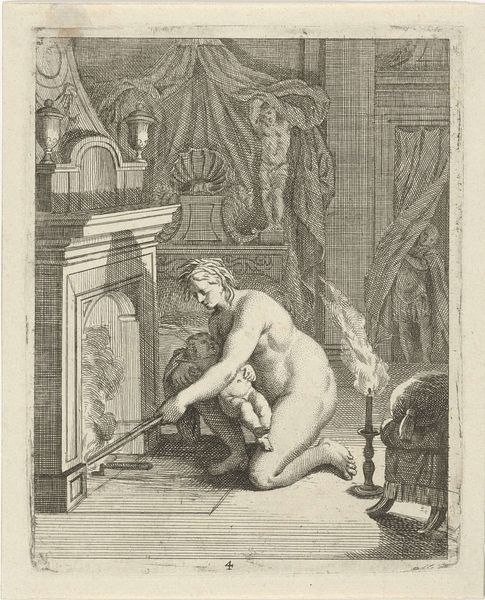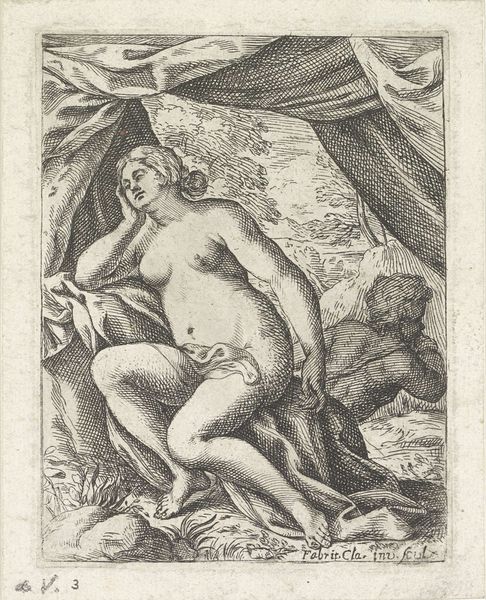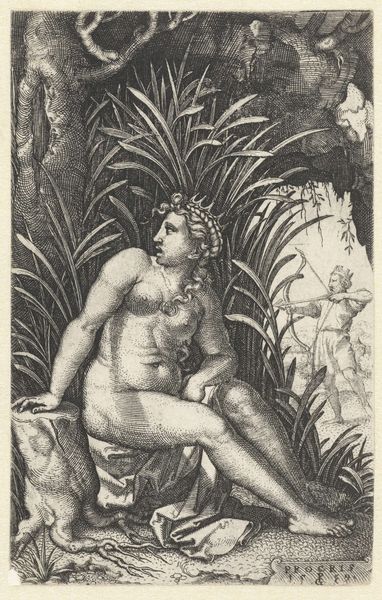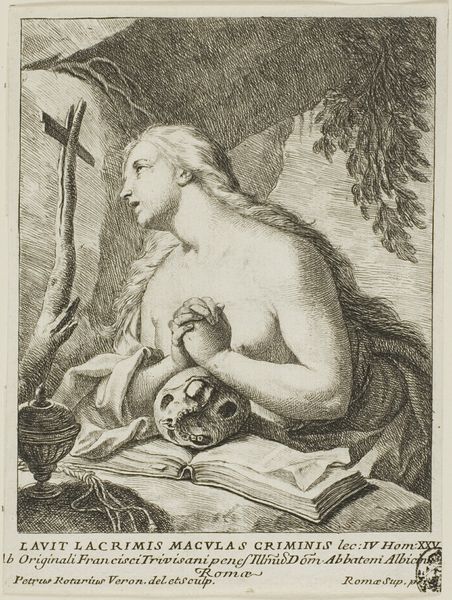
#
pencil drawn
#
light pencil work
#
pen sketch
#
pencil sketch
#
old engraving style
#
personal sketchbook
#
pencil drawing
#
pen-ink sketch
#
sketchbook drawing
#
pencil art
Dimensions: height 76 mm, width 52 mm
Copyright: Rijks Museum: Open Domain
Curator: This is Georg Pencz's "Reuk (Olfactus)," created between 1542 and 1546. It's currently held at the Rijksmuseum. Editor: My first thought is how surprisingly sensual it is for an allegorical representation. There's something intimate in the way the light catches her skin, and the hawk seems like a possessive companion. Curator: The sensuality aligns, doesn't it? She embodies the sense of smell; her body almost invites you to inhale her fragrance, playing with contemporary ideas around feminine allure and the act of beholding itself as an act loaded with gendered politics. Editor: Exactly, but consider how smell functions symbolically. Flowers signify not just beauty but also decay, mortality. This woman, holding the fragrant posy, reminds us that even pleasure is fleeting. Note also the bottles at her feet and the bird nearby: objects relating to alchemic exploration and possible connection to medicine and transformation rituals. Curator: And consider the socio-political implications, then, around ideals of feminine hygiene and beauty standards in that era and our own. The image makes me think about the very construction of cleanliness, privilege, and how those are perceived in different class strata of European society. The artist seems to implicate even these senses into ideological projects. Editor: True. The objects that frame her are doing symbolic work as well: flowers as symbols of both fertility and decay, the vase perhaps representing transformation or even sublimation. Curator: It’s not just a passive display; Pencz positions his female figure actively, making meaning. The detail around the lilies, for instance, could have several iconographic implications. Editor: Right, lilies symbolizing purity, resurrection but also association with Hera… the scent of flowers as a cultural narrative itself, a way to remember and categorize people. The more I see this, the more it speaks to me of encoded desires. Curator: Ultimately, this seemingly simple depiction of smell expands our understanding about 16th-century culture—and about how those perceptions reverberate today. Editor: Yes, exactly that echo. The image reveals a timeless connection to what we value in both the sensory and social landscape. It lingers long after the scent has faded.
Comments
No comments
Be the first to comment and join the conversation on the ultimate creative platform.
